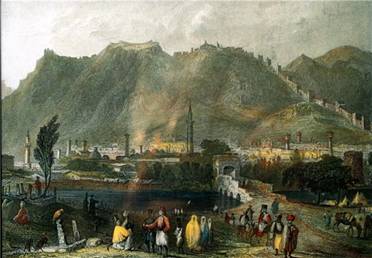|
 THE EXEGETICAL SCHOOL OF ANTIOCH THE EXEGETICAL SCHOOL OF ANTIOCH
In the third-fourth century, there appeared at Antioch, partly as a reaction to the Origenism of Alexandria, a tendency in literary exegesis which today we would call historico-critical, and which, in its dealings with Christ, included a complete re-evaluation of his human nature.
This Antiochene exegetical school was not a school in the strict sense of the word; rather, it was a group of theologians who shared the same dispositions in terms of anthropology, Christology and exegesis.
The Antioch school was attached to the literal interpretation of the Bible, and its historical and grammatical study. The Alexandrian school, on the other hand, used allegory to look for types or figures of Christ in each inspired word.
Each of these two methods followed on from the philosophy that inspired it. The idealism and speculative character of the Alexandrian school was inspired by Plato, while the realism and historicism of the Antiochene school derives from Aristotle. The first of these two great philosophers, in fact, leant towards mysticism; the second, to rationalism.
This tendency was begun by Eustachius, Bishop of Antioch between 323 and 330. He engaged in violent polemics against Origen, accusing him of having made all of Scripture into an allegory, and took a leading role in the condemnation of Arius at Nicaea in 325.
After him came Diodorus of Tarsus, who was born in Antioch and was a priest of that city, and was elected Bishop of Tarsus in 378. He played an important role at the Council of Constantinople in 381 in the ratification of the Nicene Creed, and in the introduction of the formula expressing the consubstantiality of the Holy Spirit with the Father and the Son, with the clause I believe in the Holy Spirit, who proceeds from the Father [and the Son].
Diodorus can be considered the real founder of the exegetical school of Antioch; his disciples included Theodore of Mopsuestia, Bishop of Mopsuestia in Cilicia, and the great orator John Chrysostom, who later became Patriarch of Constantinople; both men were first priests of Antioch.
|



